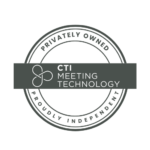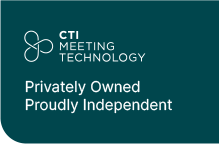Managing speakers manually is a complex task for organizers, involving multiple logistics, communications, and coordination efforts. Imagine how challenging it is when you have dozens of speakers. With dozens of speakers to manage, reliance on traditional methods like spreadsheets is no longer viable. A smooth, organized process is essential for effective speaker management, ensuring seamless communication and schedule coordination with the event program.
For speakers, the advantages of a user-friendly interface are endless as well. It allows them to effortlessly upload and edit their files; for onsite events, a Speaker-Ready room provides the convenience of uploading presentations just before their session begins.
However, if there is something that event organizers don’t have, it’s time. We get it; you juggle many moving parts and people before and during the event to ensure a successful experience. Let’s delve deeper into these challenges and discover how technology can offer a helping hand.
Challenges in Traditional Speaker Management Methods
Tracking and communicating with speakers manually often looks like a puppet show. Organizers need to pull strings from many places to effectively manage their speakers: Store speaker information in a single spreadsheet, communicate through email, receive presentations through different means, manage separate documents with speaker schedules to track conflicts… It seems like organizers need ten hands to pull this off!
Overview of Speaker Management Software
But the good news is that event technology has a solution for streamlined speaker management, streamlining the whole process. Key features include:
- A collection of speaker headshots and bios.
- A personal portal for speakers to manage their profiles and presentations.
- An embedded communication system to streamline interactions.
The perfect software solution looks different for every organization, but these features are the key to saving time and effort for organizers and participants.
Creating a Centralized Speaker Database
Time-saving isn’t the only perk of a centralized speaker database. Speaker profiles can be stored for future events, simplifying the process of adding speakers and reducing redundancy. Managing schedules and conflicts becomes effortless, with automatic detection of available time slots and conflicts. This overview also allows organizers to spot time slots without a speaker assigned, making session and program building a breeze and helping organizers allocate resources more efficiently. Moreover, as events grow in size and complexity, the software can effortlessly scale to accommodate the evolving needs of both organizers and participants.
Automating Speaker Invitation and Communication Process
Communication with speakers is also way simpler. Customizable email templates and multi-step notifications according to the actions taken, eliminating the need for manual drafting and scheduling of emails.
No need to swim in a sea of emails and look for the latest version of the presentation. Speakers can delete and upload a new presentation file directly to the Portal with just one click; the last version always defaults to the content streamed at the meeting.
Tracking and Managing Speaker Schedules, Session Topics, and AV Requirements
Speakers can upload and manage their presentation materials – including slides, videos, and other audiovisual requirements – to the self-service platform. Speaker management software integrates with audiovisual (AV) systems, ensuring smooth delivery of presentations during the event. This eliminates the need for manual handling of presentation materials and enhances the overall presentation experience.
When speakers are added to a session, a conflict of interest will show up if they are added to a different session in the same time slot, avoiding double bookings. And of course, speakers might also attend some of the sessions during the conference. They can create their own itinerary from the platform to attend those sessions of interest whenever they are available.
Analytics and Reporting
In addition to streamlining the speaker management process, the right meeting management software offers valuable insights through data analytics and reporting. Organizers can track key metrics such as attendee engagement, session attendance, and audience feedback, allowing them to make informed decisions and optimize future events. Moreover, by leveraging advanced reporting features, organizers can demonstrate the ROI of their events to stakeholders and sponsors, ultimately increasing investment and support. And the best part? This information can be generated and downloaded in just a few minutes!
Wrapping Up…
Organizers need ways to streamline the planning process and save time and costs. Speaker management software can turn one of the most tedious tasks into a seamless process. From working as a simple tool for storing speaker information to its current state as a comprehensive platform for event planning and executing, there are many exciting tools yet to be explored. Organizers can use reliable event software to reduce costs and save resources for other parts of the event.
Looking for a speaker management solution for your upcoming conference? Check out our innovative solution and its features.





